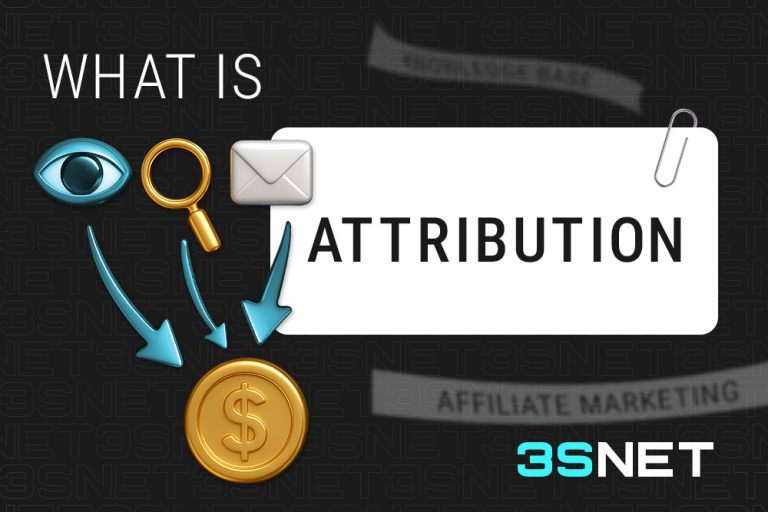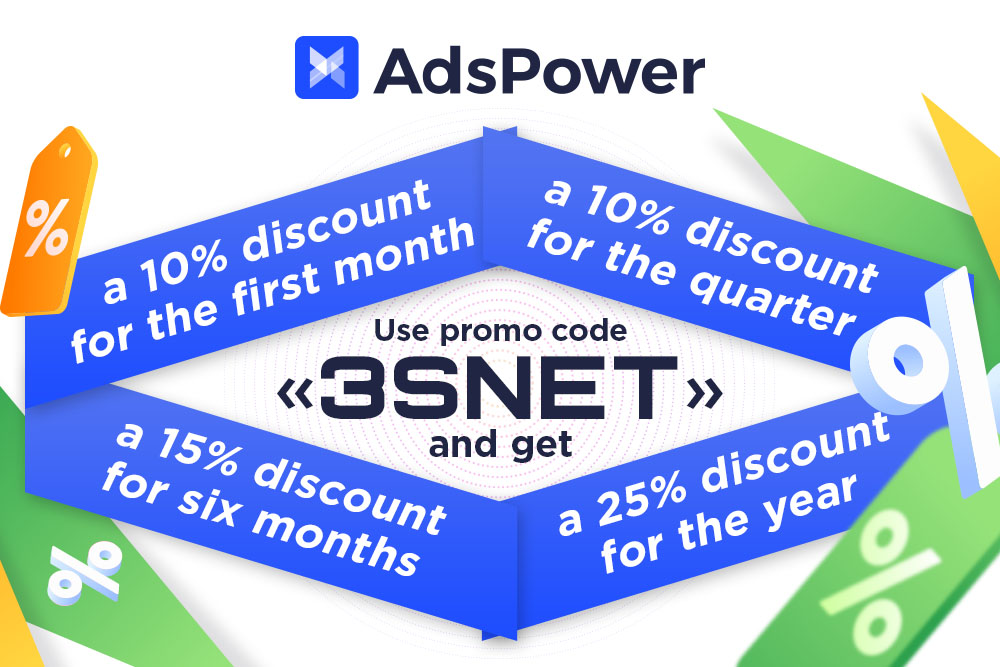
Publication date: 27 October 2025
What is attribution? In essence, it’s the process of identifying which ad interaction (or touchpoint) led a user to complete a target action — registration, deposit, subscription, or any other KPI-based conversion. In the English-speaking affiliate industry, this process is known as affiliate attribution.
For successful promotion in online casinos and sports betting, you need more than just a strong traffic source — accurate analytics is essential. At the heart of that analytics lies attribution.
Without proper attribution in affiliate marketing, it’s impossible to understand which sources actually deliver results, which landing pages and creatives convert, and which ones simply burn the budget. That’s why a well-built attribution system is the foundation of any tracking and analytics setup in performance marketing.
Why attribution matters in betting and gambling
For media buyers, attribution is far more than a technicality — it’s your ultimate profit lever. The model you choose directly dictates publisher payouts, defines your optimization strategy, and determines what you scale. This is non-negotiable in sports betting and iGaming, where user paths are complex and filled with repeat touchpoints.
Get it wrong, and you’re flying blind. A flawed model can falsely label vital initial traffic as unprofitable. The result? You kill campaigns that were actually working and lose all sight of where your real conversions are coming from.
Accurate attribution in affiliate marketing is more important than ever now that third-party cookies are disappearing and privacy policies are tightening. User data is increasingly anonymized, and traditional tracking methods are losing precision. That’s why choosing the right attribution model and tracking platform is a critical step — especially for affiliates running multi-channel campaigns across different GEOs and complex funnels. In practice, professionals often use platforms like Binom, Keitaro, or Voluum, which allow flexible attribution model configuration and conversion window setup.
Main Attribution Models in iGaming
Attribution models define how credit for a conversion is shared across multiple user touchpoints. Each model follows its own logic and provides different insights. Below is an overview of the key models used in affiliate and performance marketing.
Last-touch Attribution
The simplest and still one of the most popular models. A conversion is credited to the last click before the target action.
Last-touch is simple: the last click gets all the credit. It’s perfect for fast-paced verticals like betting or nutra, where conversions are quick.
The downside? It ignores the upper funnel. Banners or content that first attracted the user get no recognition.
First-touch Attribution
The reverse logic: the conversion is credited to the first click that started the user journey.
This model helps identify which channels attract cold traffic best and measure upper-funnel performance. It’s useful for long-term acquisition strategies and analyzing awareness campaigns.
However, like Last-touch, it ignores subsequent interactions that often finalize the conversion.
Multi-touch Attribution
An advanced model that distributes conversion value across several touchpoints. It’s the most flexible and realistic approach used in BI systems and professional tracking platforms.
Multi-touch attribution finally reveals your customer’s true path. Instead of guessing, you see the complete journey — from that first banner view to the final retargeting click. Now you can identify which channels and creatives actually drive conversions, and optimize your media mix based on hard data, not just assumptions.
For affiliates, Multi-touch is especially valuable when working with complex funnels that involve landers, pre-landers, and multiple traffic types (push, native, social).
- Learn more in the full guide: What Is Multi-touch Attribution?
View-through Attribution
This model accounts for ad impressions even if the user didn’t click the banner. It registers “view-level” interactions and connects them to later actions.
View-through attribution is essential for campaigns focused on brand awareness and re-engagement. Unlike click-based models, it values ad impressions that lead to conversions later. For instance, a user might see your banner and deposit only after a direct search. This model ensures that initial impression gets the credit.
The downside: verification is complex. View-through attribution requires precise tracking and conversion window calibration to prevent inflated results. In iGaming and betting, such conversions are usually logged via postbacks or server-to-server events, as pixel-based tracking is often blocked by browsers.
Advanced Attribution Models and Weight Distribution
In multi-touch attribution, different weighting schemes define how value is distributed between touchpoints. These schemes influence the final analytical picture and decision-making.
- Linear — equal value is assigned to each touchpoint. Ideal when all interactions are of similar importance.
- Time-decay — later touchpoints receive more weight, though earlier ones are still counted. Works best when the conversion path is long.
- Position-based — prioritizes the first and last interactions (for example, 40%-20%-40%), balancing between acquisition and closure.
These models enhance analytical accuracy, helping advertisers identify which stages of the journey drive user decisions. For large programs and data-rich advertisers, they provide deep insights into true channel efficiency.
Attribution Insights and Recommendations for Affiliates
Attribution isn’t just theory — it directly impacts CR, ROI, and traffic-buying strategy.
The right model depends on your campaign objectives:
- Direct-response campaigns — Last-touch works best;
- Traffic source analysis — use First-touch;
- Funnel analytics — opt for Multi-touch;
- Brand and remarketing campaigns — apply View-through.
The key is not to limit yourself to a single model. Modern tracking platforms let you test and combine multiple models to create hybrid attribution systems where every touchpoint gets fair value.
Accurate attribution helps uncover the true value of your traffic and make data-driven decisions. For iGaming affiliates, this difference between clicks and real conversions can mean thousands of dollars. You can test how attribution works in iGaming through the offers available in the 3SNET CPA network.
FAQ
What is attribution in affiliate marketing?
Attribution is the process of identifying which specific ad interaction (or touchpoint) led a user to complete a valuable action, such as a registration, deposit, or any other KPI-based conversion. In simple terms, it’s the method used to give credit for a conversion to the correct marketing source. This is fundamental for understanding what truly drives results in performance marketing.
Why is attribution so important in betting and iGaming?
Attribution is a key profit driver, not just a technicality. In the betting and iGaming verticals, where user paths often involve multiple interactions and remarketing, correct attribution directly impacts payouts to publishers, the accuracy of campaign optimization, and scaling decisions. Without it, you can’t see which traffic sources, landing pages, or creatives are genuinely profitable, leading to misguided budget allocation and potentially cutting working campaigns.
What is the difference between Last-Touch and Multi-Touch Attribution?
Last-Touch Attribution assigns 100% of the credit for a conversion to the final click before the action. It’s simple and great for direct-response campaigns but ignores the role of upper-funnel interactions. Multi-Touch Attribution distributes the conversion value across several touchpoints in the user’s journey. It provides a more complete and realistic picture of which channels and creatives work together to drive performance, making it essential for complex, multi-channel funnels.
What is View-Through Attribution and why is it used?
View-Through Attribution gives credit to ad impressions that a user saw but did not necessarily click on, if that user later converts. This model is crucial for measuring the impact of brand awareness and remarketing campaigns, where the goal is to build recognition that leads to a conversion later. It helps capture the value of non-click interactions that still influence user behavior.
How do I choose the right attribution model for my campaigns?
The right model depends on your campaign goals: For direct-response campaigns: Use Last-Touch. For analyzing traffic sources: Use First-Touch. For full funnel analytics: Use Multi-Touch. For brand and remarketing: Use View-Through. The key recommendation is not to limit yourself to one model. Use a tracking platform that allows you to test and compare different models for deeper insights.
Share it with your friends via favorite social media


















